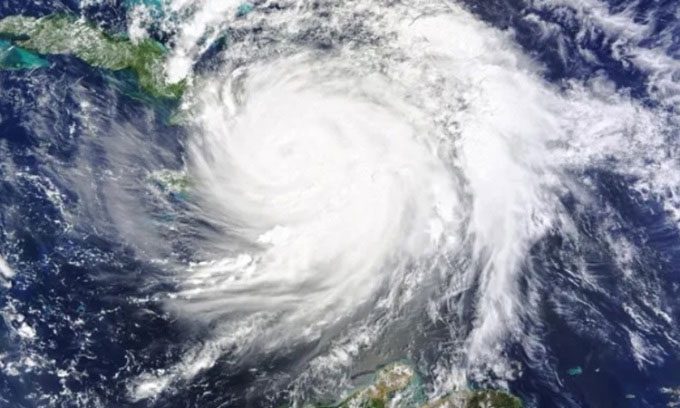El Niño is likely to recede soon, signaling a rapid transition to the contrasting climate and ocean pattern known as La Niña.
The shift from El Niño to La Niña brings with it a risk of major storms in the Atlantic and drier-than-normal weather in the southern United States. Globally, La Niña typically results in cooler temperatures; however, before its effects are felt, 2024 is still projected to be among the top five hottest years on record, according to Tom Di Liberto, a scientist with the National Oceanic and Atmospheric Administration (NOAA). “All signs point to 2024 being a hot year”, Di Liberto told Live Science on April 20.

La Niña can lead to powerful storms in the Atlantic, such as Hurricane Matthew’s landfall in Haiti in 2016. (Photo: NASA).
El Niño and La Niña describe contrasting patterns in trade winds that move around the equator, blowing westward from South America to Asia. In neutral years, when neither pattern is in effect, trade winds push warm water westward, causing cold water from deeper layers to rise to the surface as a replacement. When El Niño occurs, trade winds weaken, resulting in warmer conditions in the eastern Pacific, along with the coastal regions of North America and South America. According to NOAA, this causes the jet stream to shift southward, leading to drier conditions in Canada and the northern U.S., while bringing increased moisture to the southern U.S.
During La Niña years, trade winds strengthen, pushing warm water towards Asia and enhancing the upwelling of cold water along the Pacific coasts of the Americas. The jet stream shifts northward, causing drought in the Southwest and Southeast U.S., while bringing wetter weather to the Northwest and the Great Lakes region.
El Niño officially began in June 2023, but NOAA’s Climate Prediction Center reports that this climate pattern is weakening, with an 85% chance of transitioning to a neutral phase before June. Subsequently, La Niña may return, with a 60% likelihood of occurring between June and August, according to the National Environmental Prediction Center. “For an El Niño this strong, it’s not uncommon for such events to end and quickly transition to La Niña,” Di Liberto stated.
Current ocean measurements show warm surface temperatures in the Pacific, but the water below is cooler than average. As the cold water rises to the surface, the transition will occur rapidly. The shift from El Niño to La Niña raises concerns about the upcoming hurricane season, according to Alex DesRosiers, a doctoral candidate in atmospheric science at the University of Colorado. In an El Niño event, heat rises from the eastern Pacific into the upper atmosphere, leading to stronger winds at higher altitudes. This creates vertical wind shear, a difference in speed and direction of winds at the surface compared to the atmosphere. Vertical wind shear can disrupt storms as they are forming.
In La Niña, the winds in the upper atmosphere are calmer, reducing wind shear and allowing major storms to develop through convection of warm, moist air from the sea surface. “As we transition to La Niña, the atmosphere becomes more conducive for storm development and intensification,” DesRosiers explained.
Due to the anticipated effects of the upcoming La Niña and the currently extremely warm surface temperatures in the Atlantic, the climate and tropical weather research team at Colorado State University predicts a very active Atlantic hurricane season, estimating 23 named storms (above the average of 14.4) and 5 storms of Category 3 or higher. This year could resemble 2010 and 2020, both of which had active hurricane seasons, though it’s uncertain whether strong storms will impact land.


















































